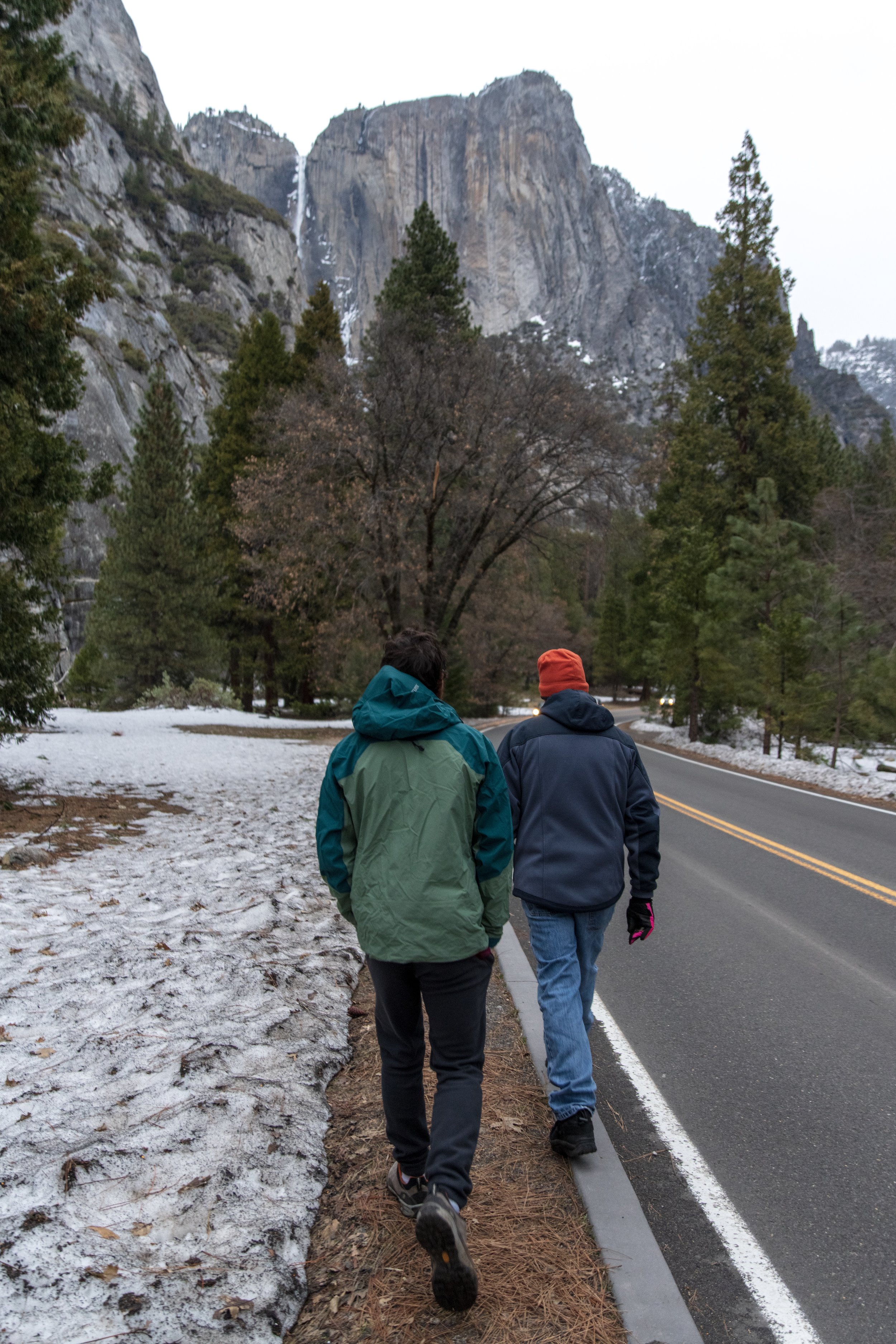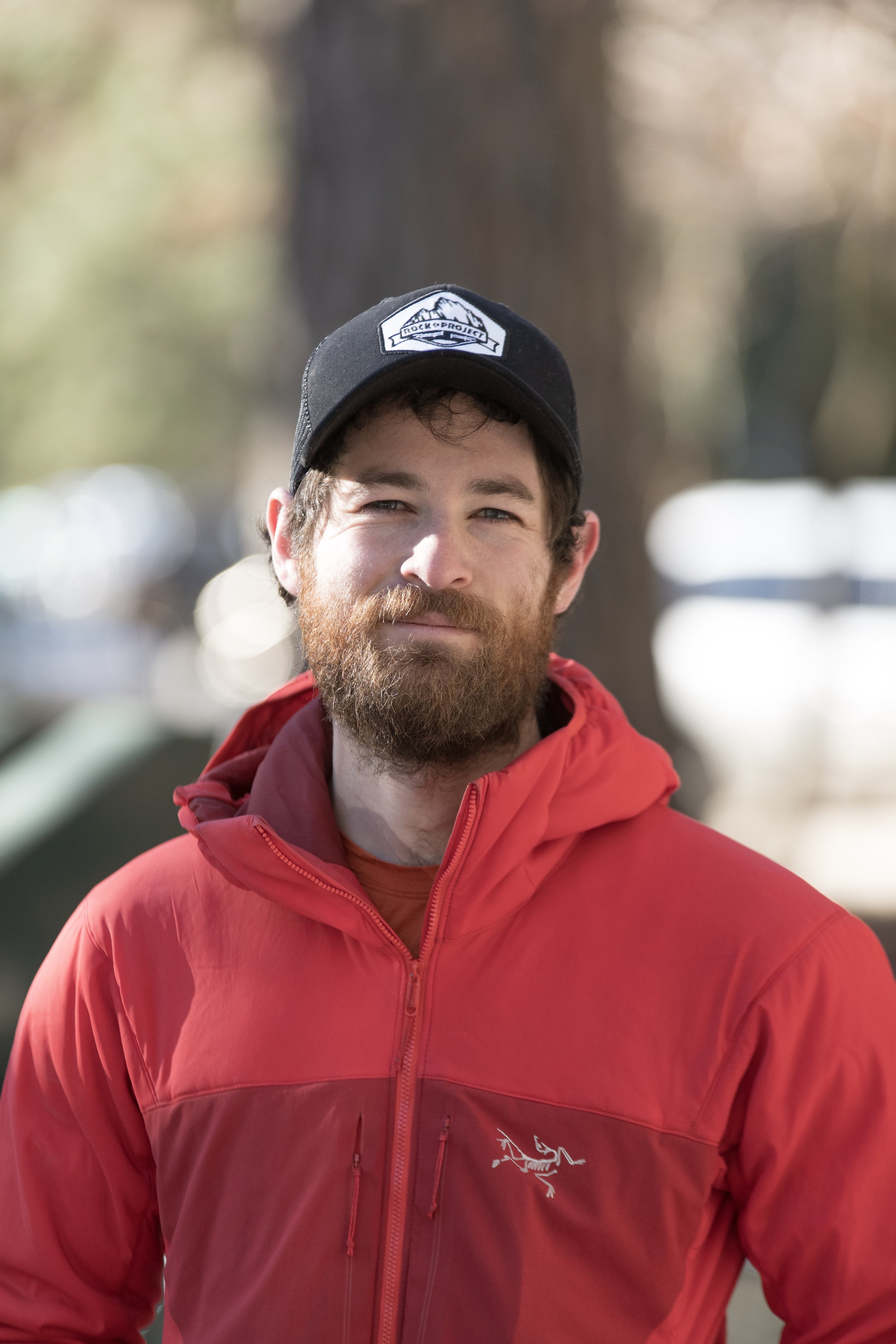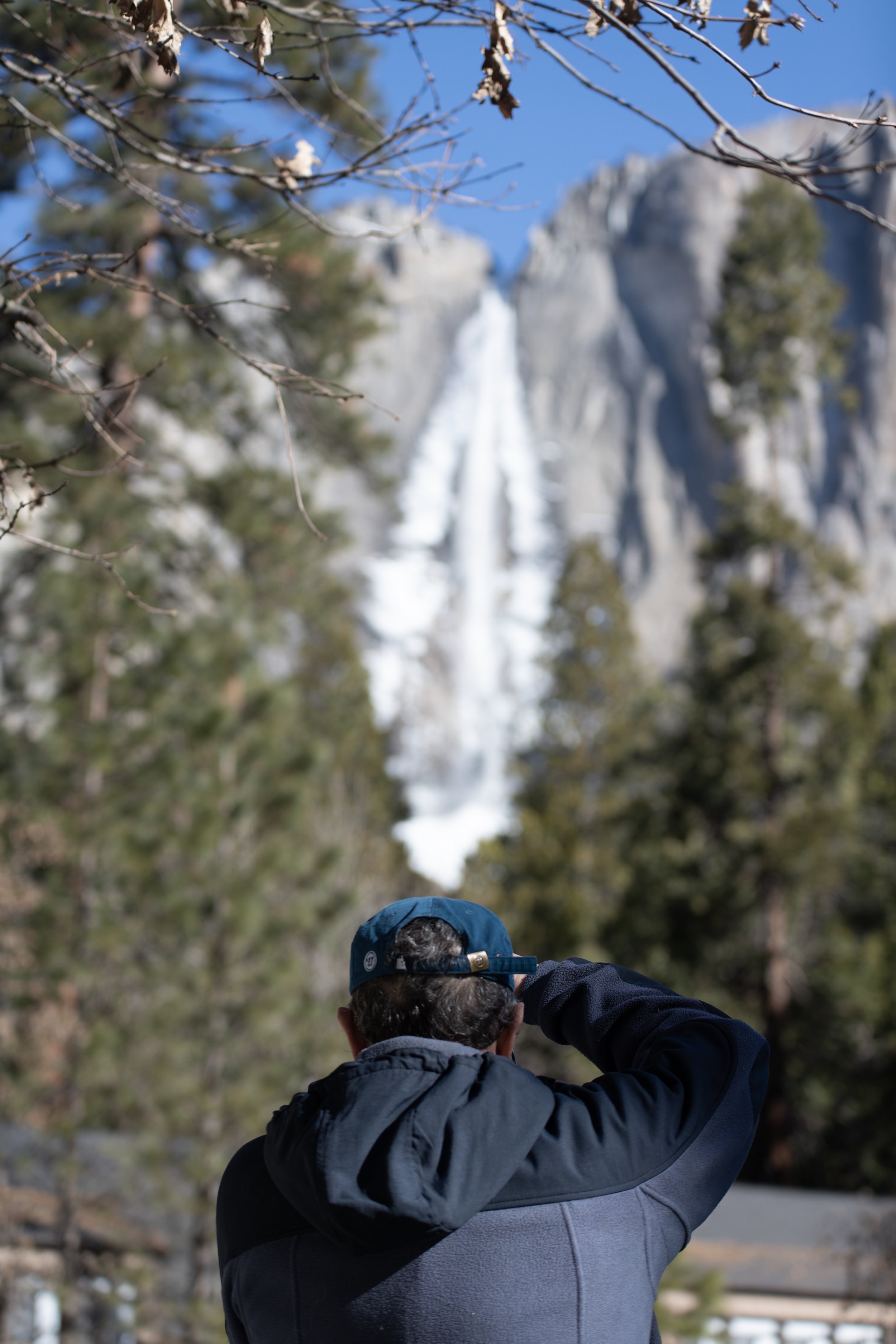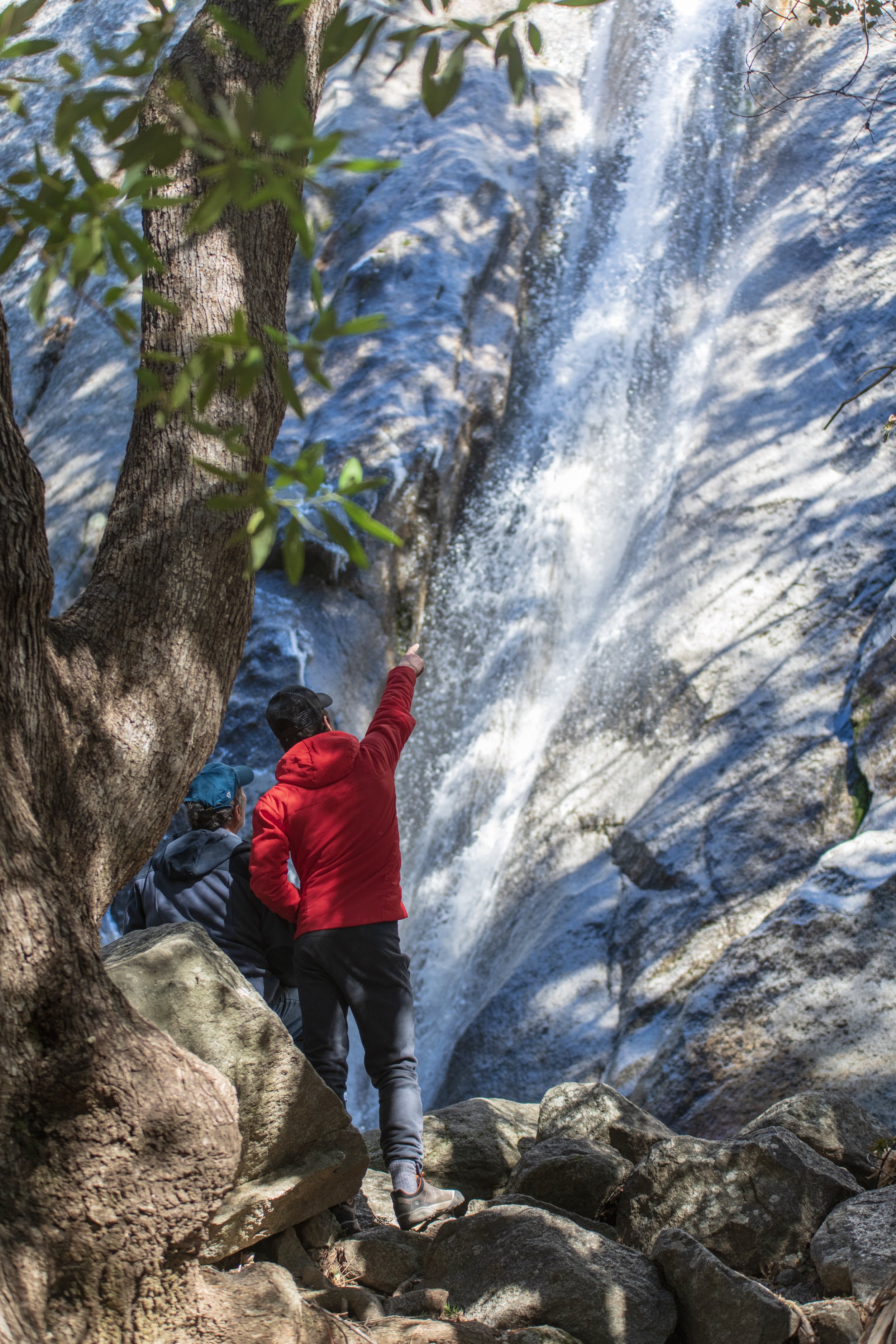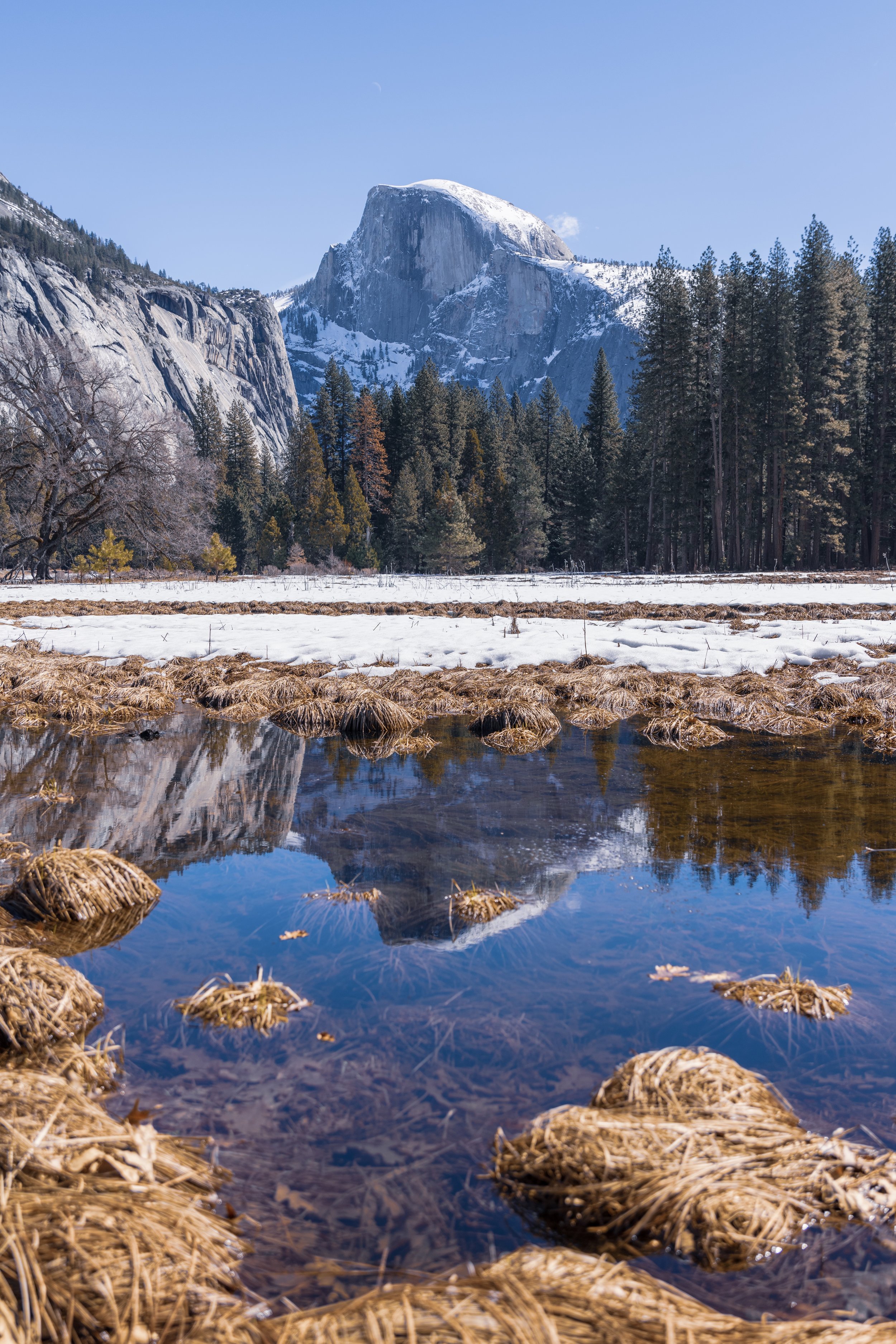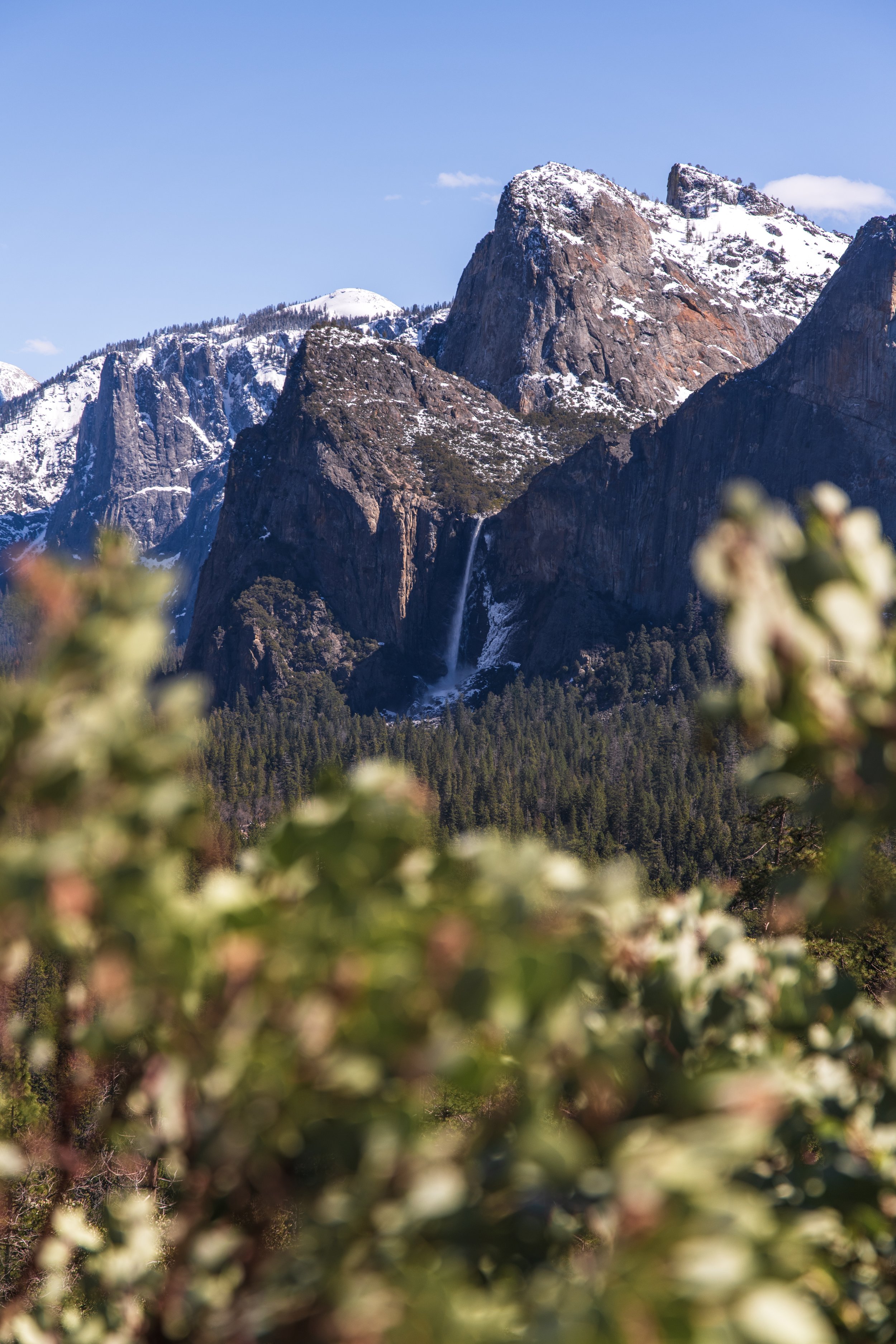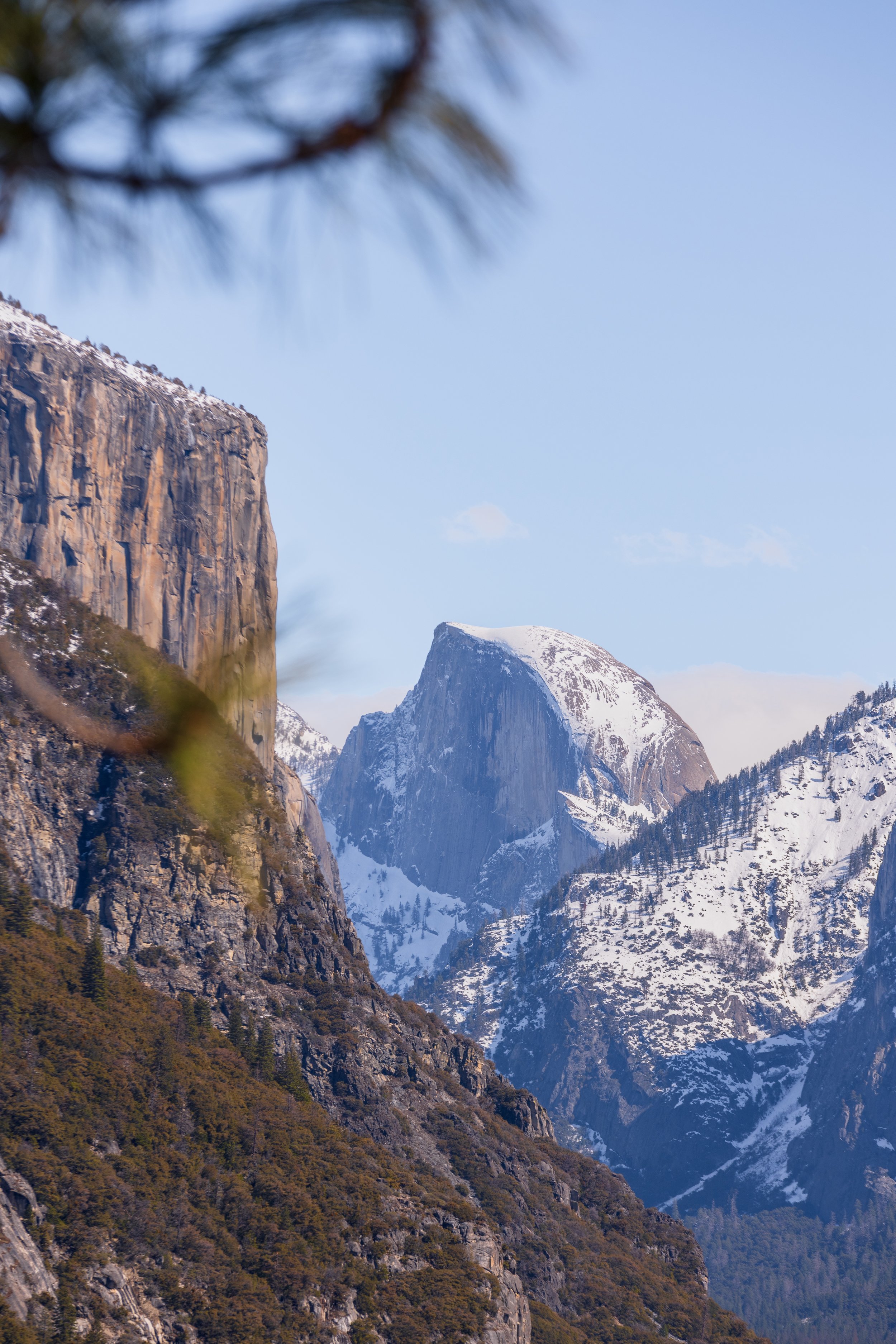A few weeks ago, Matt and I set off on a trip to Yosemite to ski to the legendary Ostrander Hut with Elliot, patriarch and OG badass of the Fineman family. The plan was simple: fly into Oakland, drive to Yosemite and stay overnight at the Yosemite Lodge, then skin the 12ish miles up to the hut for 2 nights of alpine bliss, complete with bunkbeds, the snores of strangers, and a flask of whisky.
In a stroke of genius, Matt and I decided to book parking at one of the airport lots to save us the hassle of Ubering with our skis (shoutout to Krystin Norman and Evo for lending us a wheely bag, total lifesaver). We found a screaming deal online, paid, and left with ample time to park, shuttle to the airport, check our bags, and be on with it.
Or so we thought.
It turns out the address they sent us in a confirmation email lead to a random empty lot behind a fast food joint. With no cars or people to guide us, we googled a second address after failing to get a person on the phone. Twenty minutes later, we arrived at said address only to find that it too was not a parking lot. Frantic at this point, we decided to throw caution (read: money) to the wind and park at the airport because we were dangerously close to missing our flight. We plugged the airport into the GPS and BAM, the gas light came on.
Allow me to briefly interject with a story about a common issue with mid-90s to early 2000s Subarus: they are finicky AF about receiving gas. So, approximately 15 minutes later we acquired two gallons of gas, sufficient to make the drive to the airport and back to a gas station upon our return, and we were on our way!
We crushed the twenty minute drive to the airport in approximately 25 minutes (because traffic) and found a parking spot on level 8. Feeling triumphant, we grabbed our bags and rushed to the Alaska desk to check our skis. There, a very kind man informed us that while we could still make the flight, we wouldn’t be able to check our bags. Apparently TSA doesn’t take kindly to folks trying to carry on skis, much less full touring setups with beacons, probes, and shovels so we were SOL. Deflated, we headed to the customer service desk where an exceptionally kind woman took pity on us and promptly rebooked us on the next flight WITH NO FEES, WHEEEEE! We grabbed our things and headed back to my sisters house for a couple of hours of sleep before doing the whole thing over again, this time opting to just catch an Uber to the airport. Pro-tip: make sure you request an XL if you’re traveling with a ski bag and several large packs. I’ll spare you the details of wrestling our shit into the tiny boot of the cute BMW that arrived to pick us up at 3:45am.
We arrived in Oakland and promptly grabbed our checked backpacks, then waited for our skis to arrive at the oversize luggage department.
And waited.
And waited.
And waited.
We finally gave up, and checked in at the baggage desk where they informed us that they had no idea where our ski bag was but they would find it. In the meantime, we were advised to try and find rentals. Feeling defeated, we headed to the Fineman house to regroup and research. I finally found a shop in Berkeley that rented touring setups (shout out to California Ski Co) so we packed up the car and hit the road. On the upside, the shop had a pair of Black Diamond Helios 95 for Matt, skis he had been eyeing for some time. On the downside, the skins for the setup I was renting were missing and the odds of getting a replacement set looked grim. At that point, Alaska called to say they had found our bag and it was en route to the Oakland airport. So, we drove back to Oakland, grabbed the skis, and FINALLY hit the road.
The drive to Yosemite is beautiful in places and between dozing off in the back and grocery stops, I was full of excitement. We pulled into the Yosemite Valley Lodge and checked in, then went on a short hike to Yosemite Falls, roaring into the (very grey) sunset. We grabbed dinner and drinks, then packed our bags for the morning and hit the hay. Once our party-hearty neighbors calmed down at 3 am, we got a few hours of shut eye and woke up far from refreshed but super stoked.
We made the drive up to the Yosemite ski area to check in with the rangers and park the car, then we were off! The skin up begins with a short section of climbing, then mellows out into a gently rolling groomed trail. Elliot took a little tumble early on, and a few miles in decided to call it. He felt great physically, but a little imbalanced and was understandably worried about taking a fall on the notoriously steep hills closer to the hut on the way down. Feeling sad, we made a new plan which involved Matt and I carrying on to stay at the hut for one night. We stopped to exchange certain items of gear, and I also removed the footbed liners of my boots, which were riding up the back of my foot and causing a lot of discomfort. We said our goodbyes, and carried on up the trail. A half mile later, I felt the tell-tale signs of a blister. I popped off my boots, applied moleskin, and kept going. A mile after that, it was worse. We finally reached the cut off for the final charge up the hill to Ostrander and at this point I was in a lot of foot pain. I popped off both boots to make a final assessment of my feet before carrying on to discover blood blisters the size of half dollars on both feet, plus varies other small blisters. I was perplexed, having never had problems with these boots before, and frustrated. I was also in a lot of pain. And, having cramps. THANKS BODY.
At this point, I realized that if we carried on I would be pretty miserable the rest of the day, not to mention the following day as we skied out. With trips to New Mexico and Nepal looming, I also wanted to make a smart choice for my feet. So, with one bout of tears I made the call to turn around. It sucked, big time.
Before beginning our descent, I patched up my feet as best as I could and we fired off messages to Elliot to let him know what was happening. Then we began the painful ski back, each subtle motion of my feet sending fire up my legs. As we skied, we kept checking for a response from Elliot, but none came. We finally made it back to the trailhead to find the resort and ranger station closed, with barely a car in the lot. We limped to the lodge to use the bathroom and regroup, and started to face the reality that we might be bivvying in the parking lot, having no way to get down the mountain.
At this point, a staff member came outside and saw us. Curious, he asked what we were up to so we explained. He took pity on us, and offered to help. As he made his offer, an employee bus came around the corner. “Let me see if you can catch a ride.” he said. A few minutes later, we were loaded up on the bus, snacking on Joe Chocolates and peanut butter while the driver regaled us with stories from his time spent in the Denali backcountry. It felt like sweet, sweet success.
We finally reached the Yosemite Lodge, where we faced our next conundrum: with no responses from Elliot and no wallets, what should we do? We briefly entertained the idea of sleeping at Camp 4 but without a tent or sleeping pads and with my feet in need of some TLC, it was a grim prospect. So, I decided to approach the hotel staff and explain our situation. To my surprise and joy, it was the same woman who checked us in initially and she remembered us! She quickly got us sorted with a room using some sort of magic, and 10 minutes later I was showered, bandaged, and laying in bed.
We finally met up with Elliot, just in time to miss last call for dinner so we toasted marshmallows and ate housemate potato chips by the fire while we caught him up on our disaster. We all laughed, then went to bed. The next day we explored the valley, checking out some classic sights before hitting the road. Even though we didn’t achieve our objective, I’ll never forget the trip or the kindness of strangers that helped us stay safe and happy.
And that, my friends, is how to not ski to the Ostrander Hut.
